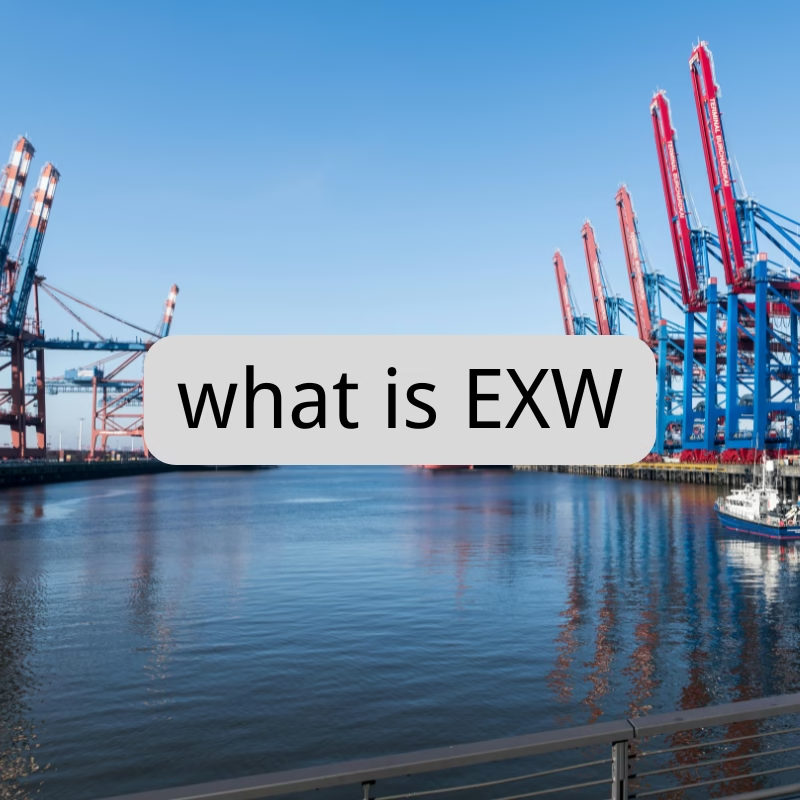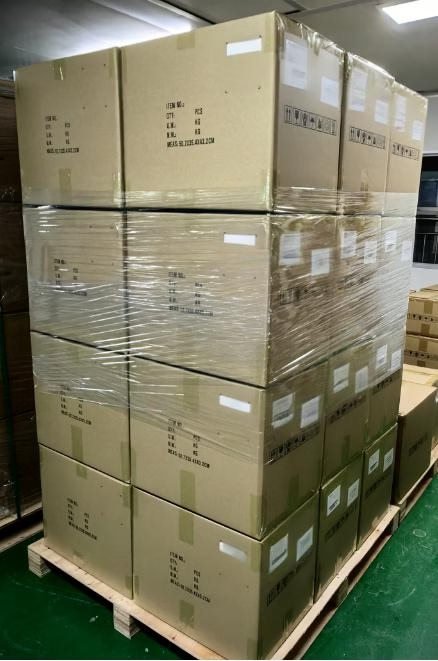Learn everything about EXW in shipping: meaning, EXW vs FOB, Incoterms 2025 updates, and how to calculate EXW fees with real-world examples.
What Does EXW Mean in Shipping?
EXW, short for Ex Works, is one of the most fundamental Incoterms (International Commercial Terms) used in global trade. Under EXW, the seller’s responsibility is minimal: they only need to make the goods available at their premises (factory, warehouse, or another agreed location). From that point onward, the buyer assumes all costs and risks, including:
- Loading the goods onto transport
- Export customs clearance
- International freight and insurance
- Import duties and delivery to the final destination
In short, EXW is the buyer-heavy Incoterm, giving maximum control but also maximum responsibility to the importer.
What Is the Difference Between FOB and EXW?
The distinction between FOB (Free on Board) and EXW (Ex Works) is crucial for importers and exporters:
| Aspect | EXW (Ex Works) | FOB (Free on Board) |
|---|---|---|
| Delivery Point | Seller’s premises (factory/warehouse) | On board the vessel at the port of shipment |
| Export Customs | Buyer’s responsibility | Seller’s responsibility |
| Loading | Buyer arranges loading at seller’s site | Seller loads goods onto vessel |
| Risk Transfer | At seller’s premises | Once goods are loaded on vessel |
| Transport Costs | Buyer pays all costs from seller’s site | Seller pays until goods are on board |
In practice, FOB is often preferred by buyers new to international trade, since the seller handles export clearance and port delivery. EXW is better suited for experienced buyers with strong logistics networks.
EXW Incoterms Explained
EXW is part of the Incoterms® rules published by the International Chamber of Commerce (ICC). It is widely used because it simplifies the seller’s role. However, it also creates challenges:
- Advantages for sellers: minimal obligations, no need to manage export logistics.
- Challenges for buyers: must handle export clearance, which can be complex in countries like China where foreign buyers cannot directly file customs declarations.
EXW Incoterms 2025: What’s New?
The 2025 update of Incoterms introduces clarifications to reflect modern trade practices:
- Digital documentation: Electronic invoices, e-bills of lading, and e-clearance forms are now officially recognized.
- Export customs responsibility: While EXW still places clearance on the buyer, sellers must now provide reasonable assistance if local laws require them to be involved.
- Risk management guidance: New recommendations on handling force majeure events (e.g., strikes, political unrest).
- Insurance considerations: Buyers are strongly advised to secure comprehensive cargo insurance since risk transfers at the seller’s premises.
These updates make EXW more transparent but also highlight the importance of professional freight forwarders to avoid costly mistakes.
you may also want to read: DDP shipping cost breakdown
How to Calculate EXW Fees
When calculating EXW costs, remember that the EXW price is essentially the factory price. It does not include transport, insurance, or customs. Buyers must add:
- Domestic transport from seller’s premises to port/airport
- Export clearance fees (if applicable)
- International freight charges (sea, air, or rail)
- Insurance premiums
- Import duties, VAT, and customs clearance fees
- Final delivery costs to the warehouse or customer
For example, if a factory in Shenzhen quotes EXW $10,000, the buyer might end up paying $15,000–$18,000 landed cost after adding trucking, export clearance, ocean freight, and import duties.
EXW Real-World Example
A European importer buying electronics from Shenzhen under EXW terms:
- EXW Price (factory): $50,000
- Trucking to Yantian Port: $1,200
- Export clearance: $300
- Ocean freight to Hamburg: $4,500
- Insurance: $200
- Import duties & VAT: $9,000
- Final delivery in Germany: $800
Total landed cost = $66,000 This shows how EXW can significantly increase the buyer’s financial responsibility compared to FOB.
Q&A: Common Questions About EXW
EXW offers maximum control for buyers but also maximum responsibility. With the 2025 Incoterms updates, EXW remains a popular choice for experienced importers who want to manage logistics independently. However, for newcomers, FOB or FCA may be more practical.
A Guide to China’s Top 5 Airports 2025
Soaring Through the Middle Kingdom: A Guide to China’s Top 5 Airports 2025, China’s meteoric…
The Ultimate Guide to Sourcing & Shipping Christmas Ornaments from China
The Ultimate Guide to Sourcing & Shipping Christmas Ornaments from China. The holiday season is…
Decoding Shunde: The Ultimate Guide to the World’s Appliance Capital
Decoding Shunde, If you’ve ever turned on a microwave, blended a smoothie, or adjusted your…






Pingback: Understanding EXW, FOB, CFR, CIF, and DDP